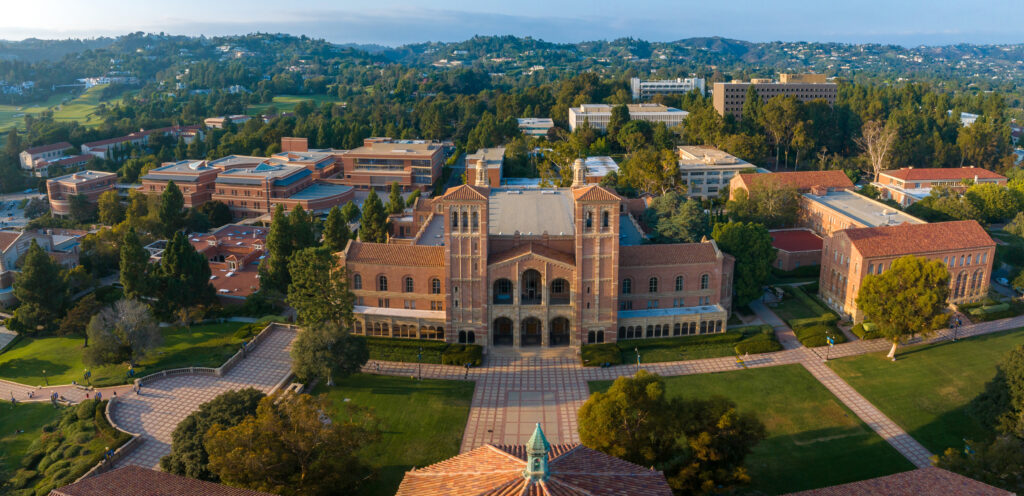Choosing a college is a crucial decision. And while “bigger is better” is true for some things (like ice cream and swimming pools), it doesn’t necessarily apply to colleges. So, how do you choose the best?
Many students overlook how much their surroundings impact the overall experience, but college size is one of the most influential factors in their day-to-day life. It’s not just about the number of students or the size of the campus, after all; it’s about the entire atmosphere you’ll have for the next four years.
If you’re ready to find out, I’m sure you’re curious, so let’s jump right into what you need to know. Today, we’ll break down the most important lessons about college size and admissions, especially for students going through this for the first time. This guide will help you reflect on what kind of environment will help you thrive — and how to make a strategic and confident decision based on your personal needs.
Lesson 1: It’s about you, not just the school name
If you don’t read anything else, here’s the most important tip: finding the right fit matters far more than a school’s perceived prestige or ranking. College size directly shapes your daily experience academically, socially, and emotionally. Ultimately, you need to know what’s right for you.
Before you even start looking at specific schools, take a moment to really reflect on some key questions.
- Your learning style: Do you thrive when you can actively participate in discussions, or do you prefer sitting back and soaking in information from big lectures?
- Social preferences: Are you craving a sprawling campus where you can constantly meet new people, or does the idea of a close-knit community where everyone knows your name sound more like you?
- Main academic interests: Are you laser-focused on a specific field, or do you want the freedom to explore a wide range of subjects before declaring a major?
- Your support needs: Do you see yourself as a total self-starter who’s comfortable advocating for your own needs, or would you benefit from more hands-on guidance and support from professors and faculty?
- Future extracurricular involvement: Do you want to try a bit of everything, or dive deep into a few activities where you can take on leadership roles?
Not to mention, college size can seriously affect your mental health support and overall sense of belonging. On one hand, smaller colleges may offer easier access to mental health resources and more visibility for your accommodations. On the other hand, large schools can feel anonymous at first, but may offer robust wellness programs — if students seek them out. Bottom line? You really need to think about what kind of environment will allow you to thrive and be your best self.
Remember, colleges are looking for students who will be happy and successful on their campus. And when your application shows that you’ve done your homework on a school and that it’s a natural fit for your goals and learning style? That communicates genuine interest to the admissions officers.
There are other reasons to make sure your college list prioritizes your needs, too. Hear from Jermaine, an expert Empowerly counselor, on why this is so critical to understand:
Lesson 2: Big school vs. small school (core differences)
Now let’s look at the strengths and potential limitations of each type of campus experience.
Large universities (generally 15,000+ students)
Examples of large universities include UCLA, the University of Michigan, Ohio State, UT Austin, and the University of Washington.
- Academics: Big colleges will have large lecture halls for general education, but also a vast menu of majors, minors, and departments. Think expansive course catalogs, interdisciplinary programs, and high-tech research labs.
- Resources: Expect extensive libraries, career centers, on-campus jobs, internships, health and counseling services, and student organizations of every flavor. These schools can feel like cities in themselves.
- Social life: Picture Big Ten football games, high-profile concerts, Greek life, and multicultural clubs. You’ll meet people from around the world and have endless opportunities to socialize.
- Faculty interaction: In the early years, personal connections with professors may require more initiative. Teaching assistants or graduate students lead many intro courses.
- Campus feel: Can be exciting but overwhelming. Navigating the size takes time, and some students initially feel anonymous (for better or worse).
It’s a good fit for you if you…
- Thrive in a bustling environment with lots of stimulation and activity
- Want flexibility to explore a wide range of academic paths
- Are comfortable advocating for yourself and seeking out support
- Feel energized by crowds, sports, and/or large-scale events
Small colleges (generally under 5,000 students)
Well-known examples of small schools include Swarthmore, Bowdoin, Pomona, Amherst, and Wellesley.
- Academics: You’ll find smaller class sizes, which are more interactive and discussion-based. Liberal arts colleges emphasize critical thinking and writing. Professors are hired for teaching excellence alone, since research output doesn’t matter as much.
- Resources: While not as vast, resources are often more accessible. Need help from financial aid or career services? You’ll likely get to know the staff personally.
- Social life: Expect a close-knit community with strong traditions. Events might be smaller scale, but you’ll recognize familiar faces and feel a strong sense of belonging.
- Faculty interaction: A standout feature! Professors are highly available, offering mentorship, research opportunities, and even writing support.
- Campus feel: Supportive and collaborative. It can feel like everyone knows someone who knows someone, you know?
It’s a good fit for you if you…
- Learn best in small classes with active discussion
- Want close relationships with professors and peers
- Value a tight-knit, community-oriented environment
- Hope to take on leadership roles early and often
Bonus: medium-sized colleges
You may have noticed that not all colleges or universities fall into one of the previous categories! Good catch. If you’re not drawn to either extreme, a medium-sized college (typically 5,000-15,000 students) could be your golden ticket to academic balance.
Looking for examples? Think Tufts, Wesleyan, Georgetown, or Rice. These schools often combine the academic variety and resources of larger universities with a more personal and manageable campus experience.
For a deeper dive into identifying the right college fit, check out Empowerly’s Guide to Understanding the College List.
| Pros | Cons | |
| Big Colleges | Wider academic and internship options Diverse social scene Lots of options | Larger, more impersonal lectures Harder to form relationships |
| Small Colleges | Close-knit community Personal attention from faculty Collaborative vibe | Fewer course offerings Smaller alumni/job networks |

Lesson 3: Your high school experience is a clue, not a rule
Your high school environment can offer insight into what you might prefer, but it’s not the final word.
- Loved your small high school? Cool! You might appreciate the intimacy and community feel of a smaller college, too.
- Thrived at a large public school? Great; you may feel energized by a university’s dynamic, diverse atmosphere as well.
- Looking for change? No worries. A different size might open new opportunities, whether you’re looking for more personal attention or more variety.
When it comes to your schooling so far, reflect on what energizes you and where you’ve felt most engaged. The key is to reflect on why you felt the way you did about your high school experience, and what exactly you hope to gain from your college environment.
Not to mention, your college experience is what you make of it. No matter the size of your school, there are steps you can take to make your education your own:
- Join honors cohorts, learning communities, or a dedicated first-year experience or transition program
- Build relationships during office hours
- Live in themed housing or small-group dorms
- Find a mentor — professor, advisor, or upperclassman — during your journey
Still not sure? Here’s another perspective on the choice between big vs. small colleges:
Think of it like choosing between a concert in a stadium versus a cozy venue — both can be amazing, but you know in advance that the vibe is completely different.
Lesson 4: Ask smart questions to reveal the truth
Like any other advertisement or promotional material, college brochures only scratch the surface. To get a true sense of a school’s size and vibe, we’re going to have to dig a little deeper. Here are some tips on how to get to the good stuff:
- Visit if you can. Attend a class, stroll through campus, or maybe grab a bite in the dining hall. Listen to what students are talking about and how they interact with one another.
- Ask current students questions (politely). Now’s the time to get a firsthand scoop. For instance, how easy is it to meet with professors? What’s a typical class size in your major? How do most students get involved on campus?
- Engage with admissions (respectfully). You can ask the admissions office questions about average classes, office hours, and support resources.
- Take a virtual approach! Watch student-led YouTube campus tours, “day in the life” videos, or join forums and chats to get an inside view.
- Be major-savvy as you search. Some large schools have small, focused departments that can become your academic home. Conversely, some small colleges offer specialized programs you might not have expected.
All of this research — in addition to helping you make up your mind — helps with demonstrated interest, a subtle but real admissions factor. Show colleges you understand what makes their environment unique.

Your action plan: reflect and research
Now that you understand the core differences between small vs. large colleges, it’s time to talk about how you’ll apply this knowledge. If you’re working on a college list (now or in the future), grab something to write with and tune in below.
Take 10-15 minutes (more, if you get on a roll) to answer the following prompts in a journal or college planner:
- Do I learn best through lecture or discussion?
- Do I want professors who know my name?
- How important is a lively social scene to me? How confident am I that I can create social opportunities if there aren’t any?
- Do I prefer exploring many subjects or going deeply into one?
- How independent am I when it comes to navigating resources?
Once you’ve put in some thought and become clearer on your priorities, you can compare specific schools and evaluate how their size influences the student experience.
Remember: you’re in control
Don’t let college size intimidate you — instead of a last-minute identity crisis, use this moment as a tool for self-discovery. Whether you’re drawn to the energy of a large university or the connection of a small college, there’s certainly a school out there where you can thrive. Start by knowing yourself, then let that insight guide your search.
Need help narrowing down your college list? Talk to an Empowerly counselor for personalized, expert guidance. Make your choice with confidence and excitement. The future is waiting for you.
